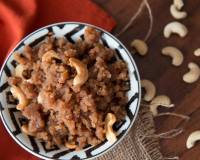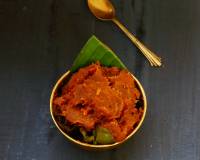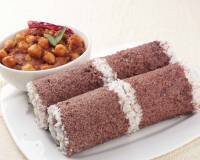Baklava Recipe - Turkish Traditional Sweet

Baklava is a crispy, rich, sweet pastry made of layers of phyllo dough filled with nuts and drenched with honey syrup. This ethnic Middle Eastern confection has been in my mind for several months, and this weekend made its grand entry into my kitchen. Few months back a traditional Turkish restaurant opened in our area and they had the best Baklavas I have tasted. Ever since I ate in that restaurant, I wanted to make this pastry, but just the labor made me postponing it. Once I actually started making, it was not too bad. More than difficult, I would call this a labor intensive dessert. Once we get in the flow, it just gets easier. The phyllo dough used in this pastry is readily available in most of the supermarkets.
Other recipes that you can try are:
20 M
120 M
140 M
8 Servings
Ingredients
- 1 lb Phyllo dough
- 1 cup Butter (Unsalted)
- 2 cups Walnuts
- 2 cups Pistachios
- 1+1/3 cups Sugar
- 2 teaspoons Cinnamon Powder (Dalchini)
- 1/4 teaspoon Cloves (Laung) , powdered
- 1 cup Honey
- 2 teaspoons Lemon juice
- 1 cup Water
- 3 tablespoons Vanilla Extract , or if available orange blossom
How to make Baklava Recipe - Turkish Traditional Sweet
To begin making the Baklava Recipe (Turkish Traditional Sweet), we first have to make sure we have all the ingredients ready.
Baklava Recipe procedure is split into 4 parts.
Coarsely chop the walnuts and pistachios in a food processor (it will be a coarse powder). Set aside 4 tablespoons of chopped nuts for decoration.
Put the remainder in a bowl and combine it with 1/3 cup of sugar, cinnamon and cloves and mix well.
Heat the oven to 170 C. Lay a dish towel on a work surface and sprinkle it lightly with water. Thaw the phyllo dough package according the manufacturer’s instructions.
Unroll the sheets on the towel and then cover it with a second damp dish towel. When unrolling them I encountered several cracks and cuts in the sheets.
Do not panic. They are easily repairable and do not make any difference in the dessert.
Melt the butter in a small saucepan. Brush a baking pan with melted butter. Take a sheet of phyllo dough and carefully spread it in the pan, folding the sheet in such a way that it fits the pan.
Brush the layered sheet with butter and gently press it into the sides and corners of the pan.
Lay another sheet on top and brush with butter. Do the same with the third of the sheets. Once 1/3rd of the sheets have been used, scatter half the nut filling over the layers.
Layer another third of the sheets in the pan, buttering each one and pressing into the corners and sides. Then sprinkle the remaining half of the nut mixture evenly.
Layer the last third of the sheets, buttering them and pressing them the same way as we did with the previous layers. Brush the top most layer thoroughly with butter and pour any remainder of butter on the top (I ignored the last step. I did not pour the remaining butter. I just liberally brushed the top layer and left it at that).
So essentially, after every 3 sheets there is a nut layer for the baklava recipe.
With a small knife, cut diagonal lines around 1/2-inch deep to mark out the shape. Do not press down too much when cutting.
Place the tray in the oven and bake for around 1 hr 15 minutes (It took me exactly 1 hr) until golden brown in color.
Combine the sugar and water in a saucepan and heat until dissolved, stirring occasionally. Pour in the honey and stir to combine.
Boil without stirring until the syrup reaches a soft ball consistency (239F on a candy thermometer). This process takes about 30 minutes.
To test the consistency without the thermometer, take the pan off the heat and dip a teaspoon in the syrup. Let it cool down for few seconds and then drop it in a small cup with water.
Once dropped into the water, it should form a mushy ball.
Remove the syrup from the heat and let it cool down to lukewarm temperature. Now add the juice from a lemon and the orange flower water or the vanilla extract.
Remove the pan from the oven and immediately pour the cooled syrup evenly over the hot baklava.
Pouring the syrup over the hot pastries enables better absorption.
With the chef’s knife cut along the marked lines almost to the bottom of the pan. Let the pastries cool.
Cut through the marked lines completely and carefully lift the pastries with a spatula and arrange them on a plate.
Sprinkle the top with the reserved nuts and serve the Baklava for your parties and special occasions.








